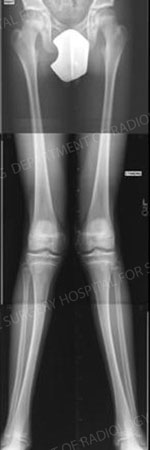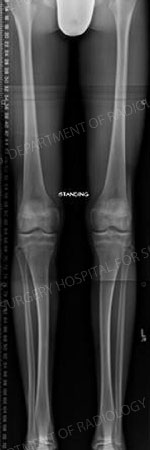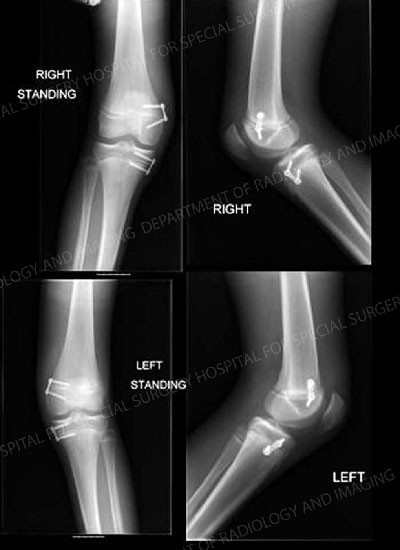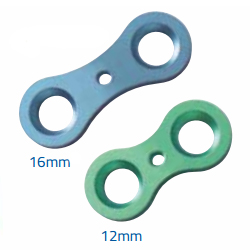Knock Knees in the Pediatric Patient
Diagnosing and Treating the Knock Knees Deformity in the Pediatric Patient
Symptoms
Knock knee deformity or genu valgum is when the knees bend inward toward one another, causing them to touch. [Figure 1.]


Figure 1. Preoperative standing X-ray demonstrating lower extremity alignment (left), and postoperative X-ray demonstrating leg alignment after surgical correction and removal of metal plates (right).
Causes
Metabolic diseases, renal failure, trauma, infection, and other conditions can cause genu valgum, but it can also be idiopathic (having no known cause).
Treatment
Treatment usually consists of guided growth, rather than osteotomy, with a plate and screws placed on the medial side (inside) of the knee.[Figure 2.] This is the opposite side from that in the correction of bowleg deformity. The specific device used to achieve guided growth is the eight-Plate system. This consists of a small, two-holed, figure-eight shaped metal plate that spans the bone's growth plate and is affixed with one screw on each side of the growth plate. [Figure 3.]

Figure 2. Postoperative knee X-rays demonstrating surgical hemi-epiphysiodesis utilizing eight-Plate devices.

Figure 3. Close-up view of eight-Plate devices.
Updated: 12/7/2016
Authors
Pediatric Orthopedic Surgery, Hospital for Special Surgery